| The Growth of Local
Canals
Staffordshire &
Worcestershire
The first to be completed in the area and open in its
entirety was the Staffordshire & Worcestershire Canal,
which just pipped the Birmingham Canal Company at the
post by 4 months.
The canal, surveyed by James Brindley (his last
completed canal), connects the River Severn at Stourport
to the Trent and Mersey Canal at Great Haywood. Work
began at Stourport in 1768 and the canal was navigable
as far as Compton in November 1770. |
|
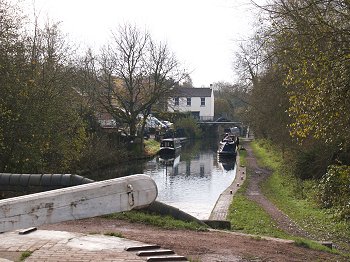
The Staffordshire & Worcestershire
Canal at Compton. |
Work progressed rapidly, and the whole 46½
miles of canal was declared open at the company's board
meeting on 28th May, 1772.
Much of the capital costs were provided by
Wolverhampton tradesmen and landowners, who greatly
profited from the new canal, which was extremely
successful for the first 40 years of its life, until the
newly completed Worcester & Birmingham & Canal acquired
much of its coal traffic. |

The complex network of local canals.
|
The canal was built using Brindley’s contour method in
which the natural land contours were followed wherever
possible to avoid locks and tunnels.
There are only 43 locks along the whole length of the
canal, 31 of which raise it about 292ft. above the
Severn to the summit plateau starting at Compton. The
remaining 12 locks lower the canal from Gailey to the
junction with the Trent and Mersey Canal at Great
Haywood. |
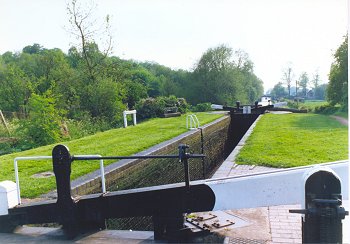
Wightwick Lock. Staffs & Worcs
Canal. |
|
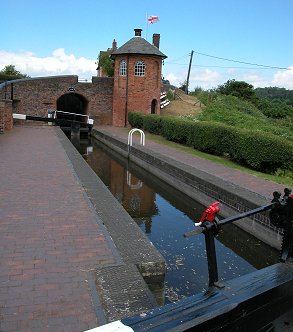
Bratch Locks at Wombourne. |
Three of the
canal's locks at the Bratch, Wombourne are unique in
Britain because they are built close together and appear
to be a staircase.
The 3
individual locks are so close together that a boat
cannot pass between them. The operation relies on the
side pounds.
|
|
The Birmingham &
Liverpool Canal
In 1835 the
Birmingham & Liverpool Canal opened, joining the
Staffordshire & Worcestershire Canal at Autherley
Junction. The 39½ mile long canal extends to the
Ellesmere & Chester Canal at Nantwich.
It was
engineered by Thomas Telford and built at a cost of
£800,000 to link Liverpool with the Birmingham Canal
Navigations, which at the time carried about 3 million
gross tons of goods, much of which was coal.
It was of
no great benefit to the Staffordshire & Worcestershire
Canal, even with its charges, as the new traffic only
travelled along the canal for about half a mile between
Autherley and Aldersley Junctions. It is now part of the
Shropshire Union Canal. |
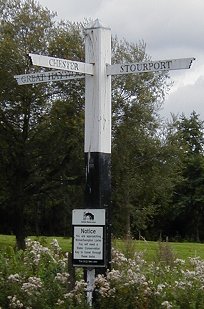
Signpost at Autherley Junction. |
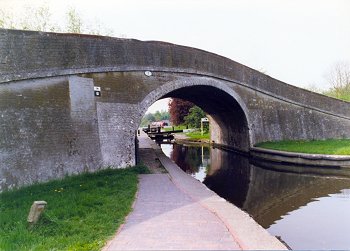 |
The view at Autherley Junction
looking along the Shropshire Union Canal. |
| The Toll House on the
Shropshire Union Canal at Autherley Junction. |
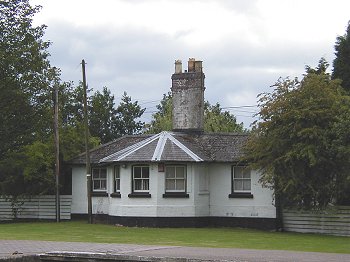 |
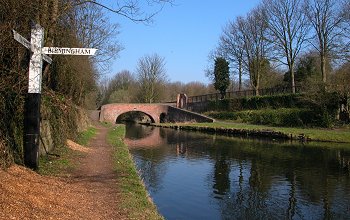 |
The signpost at Aldersley
Junction where the Birmingham Canal Navigations meets
the Staffordshire & Worcestershire Canal. |
|
The Stourbridge Canal
Another
offshoot of the Staffordshire & Worcestershire Canal is
the Stourbridge Canal which was built as a link to
Stourbridge from Stourton. The canal was originally
surveyed by James Brindley in 1766 when he was surveying
the Staffs & Worcs, but nothing could be done until the
Act of Parliament was Passed in April 1776. At the same
time the Act authorising the construction of the Dudley
Canal was Passed. It runs from Dudley to the Fens Branch
of the Stourbridge Canal. |

The locks on the Stourbridge
Canal. |
|
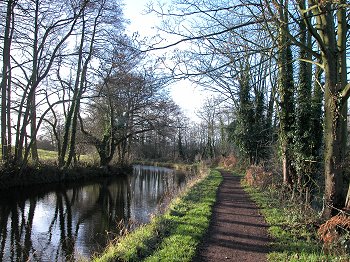
A typical rural scene on the
Stourbridge Canal. |
The
Stourbridge Canal is just 3¼ miles long and has 4 locks.
It's
branch (the Fens Branch) starts at Wordsley Junction and
extends to Fens Pool, the canal's main reservoir.
The canal
came into use on 3rd December, 1779 and for many years
the canal was extremely successful due to the many
Stourbridge industries that it served. |
| Some of the
surviving factories on the eastern half of the
Stourbridge Canal. |
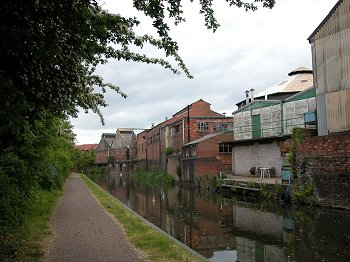 |
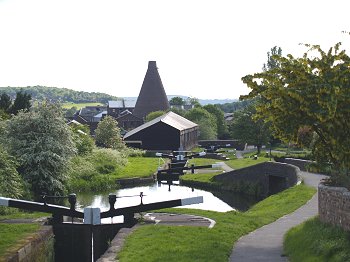 |
The Stuart Crystal
works and glass cone on the Fens Branch. |
|
Wordsley Dock on
the Fens Branch. |
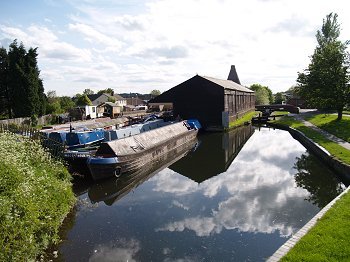 |
|
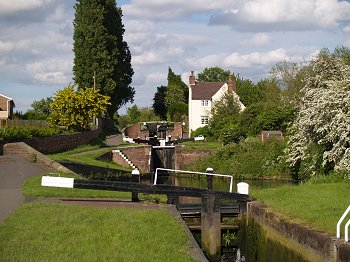
Locks on the Fens Branch. |
The Dudley
Canal
The Dudley
Canal, promoted by Lord Dudley, was 2¼ miles in length
and included a flight of nine locks at Black Delph and a
reservoir at Woodside.
The canal
was completed on 24th June, 1779, and opened with the
completion of the Stourbridge Canal in December of the
same year. |
| As the
canal was totally dependent upon the Stourbridge Canal,
the decision was taken to construct a tunnel beneath
Dudley so that the Canal could be extended to join the
Birmingham Canal Navigations.
An Act of
Parliament allowing the construction was Passed on 4th
July, 1785 and the 3,172 yards long tunnel opened for
business on 15th October, 1792. The canal also took a
lot of traffic from the Staffordshire & Worcestershire
Canal, offering a faster route to Birmingham. |
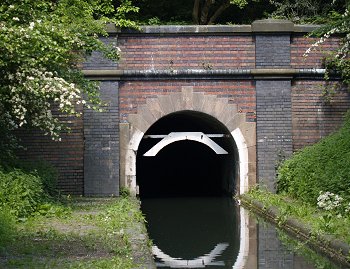
The southern entrance to Dudley
Canal Tunnel. |
 |
Return to the Canals
and Industry Menu |
|